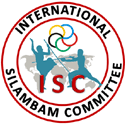About ISC

After several years of worldwide growth, numerous struggles to upfront traditional sport. Now International Non-Olympic Committee (INOC) had taken foot step to develop traditional sport. In the year 2019, INOC declared “Silambam” as Non-Olympic Sports and formed separate commission as “International Silambam Committee (ISC)”.
The different styles of Silambam, mixture of the rules and lack of unified protocols that govern any type of competition indicated a need to create an international governing body containing International Silambam Committee (ISC) that could start to address these issues from an amalgamated universal perspective.
Dr. Mohammed Seraj ANSARI, President of the International Non-Olympic Committee (INOC) and Dr.Thiyagu Nagaraj, General Secretary jointly proposed a series of meetings that would produce not only the first combined international rules for Silambam, but also the establishment of the International Silambam Committee (ISC) on 2018.
Early History
Silambam is a traditional martial art developed in the Tamilnadu, India. It is originated around 1000 this ancient fighting style is mentioned in Tamil Sangam literature 400 BCE. Silambam is now predominantly a striking art using punching, kicking, knee strikes, elbow strikes, Weapon strikes and open-hand techniques such as knife-hands, spear-hands and palm-heel strikes. Archaeologically, and in some modern styles, grappling, throws, joint locks, restraints and vital-point strikes are also taught.
Traditional stories traces Silambam back several thousand years to the siddhar (enlightened sage) Agastya. While on his way to Vellimalai, Agastya discussed Hindu philosophy with an old man he met, said to be the god Murugan in disguise. The old man taught him of kundalini yoga and how to focus prana through the body's nadi (channels). Agastya practiced this method of meditation and eventually compiled three texts on palm leaves based on the god's teachings. One of these texts was the Kampu Sutra (Staff Classic) which was said to record advanced fighting theories in verse. These poems and the art they described were allegedly passed on to other Siddha of the Agastmuni akhara (Agastya school) and eventually formed the basis of Silambam and siddha medicine.
References in the Silappadikkaram and other works of Sangam literature shows that Silambam is the Mother of all Martial Arts in the work which has been practiced as far back as the 4th century BC.
According to various sources (5th Century), third son of Indian King Ilavarasan Dharman who visited to Ancient Kingdom of Magadha (now in Bihar, India) and he learned Buddhism for almost 10 years. He was deeply influenced by Buddhism and named himself as Bodhi dharma. Finally, he started travelling to China. According to Chinese legend, he also began the Silambam physical training where a hand-to-hand combat theory, one that integrates notions of "hard" and "soft" techniques of the monks of Shaolin Monastery that led to the creation of Shaolin kungfu. Later, martial arts are developed in Japan and other countries.
Current History
Silambam is a Mother of All Martial Arts developed in the Tamilnadu, India. International Non-Olympic Committee (INOC) had taken foot step to develop traditional sport. In the year 2019, INOC declared “Silambam” as Non-Olympic Sports and formed separate commission as “International Silambam Committee (ISC)”. ISC was inaugurated and hosted first International Silambam Committee (ISC) International meeting & referee seminar were held in Madurai, Tamilnadu, India. The primary objective of which was to lay the foundation for the future of Silambam. National Silambam Federations recognized by their National Non-Olympic Committees and Highest government sport bodies and thus ISC became the most important world governing body for Silambam.





Mission of the ISC